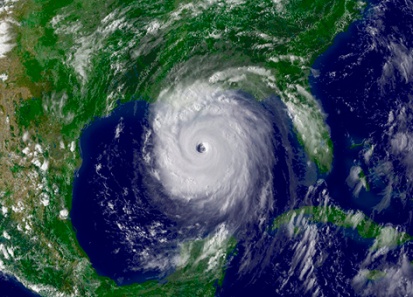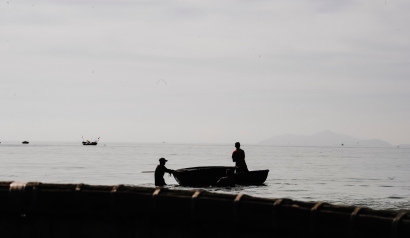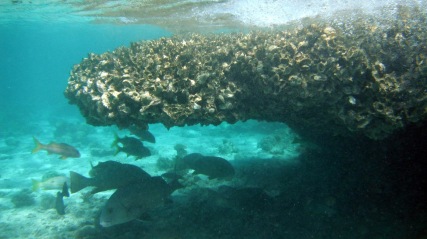We are community and ecosystem ecologists working in coastal marine and estuarine habitats. Our studies are providing new insights into processes that underpin ecological resilience in the face of multiple stressors and extreme events. We use experimental, observational, and modeling approaches to ask questions across a range of spatial and temporal scales, and scales of organization (from individuals to ecosystems).
Coastal marine and estuarine ecosystems have been heavily exploited for centuries. They also experience pressures from both land and sea. Yet these ecosystems remain fundamental to the economies, food resources, coastal protection, culture, and recreation of more than three billion people worldwide, including along the Gulf coast of the United States.
Research Themes
Predicting ecosystem responses to extreme events
 We are already seeing increases in extreme events driven by human effects on the global climate system and on nutrient dynamics in coastal oceans. Examples are storms, marine heat waves, extreme cold snaps, hypoxia (low oxygen), and harmful algal blooms. These short-term disturbances can have long-term impacts on coastal marine ecosystems and human communities. Because of these severe impacts, extreme events are generating growing interest in ecology, and in socio-ecological network studies. While a wide body of theoretical work exists, our lab is one of the few that uses targeted experiments to understand the factors shaping ecological responses to extreme events.
We are already seeing increases in extreme events driven by human effects on the global climate system and on nutrient dynamics in coastal oceans. Examples are storms, marine heat waves, extreme cold snaps, hypoxia (low oxygen), and harmful algal blooms. These short-term disturbances can have long-term impacts on coastal marine ecosystems and human communities. Because of these severe impacts, extreme events are generating growing interest in ecology, and in socio-ecological network studies. While a wide body of theoretical work exists, our lab is one of the few that uses targeted experiments to understand the factors shaping ecological responses to extreme events.
Feedbacks between biological, environmental & harvest stresses
 Understanding how multiple global changes impact ecosystems requires embracing the complexity of interactions among environmental/physical and biological/ecological stressors. These interactions often occur over different time periods and different spatial scales (e.g., microhabitats, localities, regions). Research in the Jurgens lab uses scale-relevant experimental designs that test how various stressors interact in space and time to affect marine populations, communities, and ecosystems. In particular, we consider how changes in biological interactions that accompany species invasions, habitat destruction, and predator declines set the stage for ecosystems to respond differently to short-term physical
Understanding how multiple global changes impact ecosystems requires embracing the complexity of interactions among environmental/physical and biological/ecological stressors. These interactions often occur over different time periods and different spatial scales (e.g., microhabitats, localities, regions). Research in the Jurgens lab uses scale-relevant experimental designs that test how various stressors interact in space and time to affect marine populations, communities, and ecosystems. In particular, we consider how changes in biological interactions that accompany species invasions, habitat destruction, and predator declines set the stage for ecosystems to respond differently to short-term physical
disturbances.
Effects of positive species interactions on resilience
 The last few decades have seen a surge of interest in positive species interactions (facilitation) in ecology and conservation. Certainly we know that a huge fraction of global species lives within habitats formed by other organisms—including forests, grasslands, coral reefs, mangroves, seagrass and algae stands, oyster reefs, and mussel beds. While we also know that such species strongly affect local physical conditions, we still know very little about how that in turn may affect the vulnerability of associated populations to climate warming. Research in the Jurgens lab departs from other work that documents facilitation, instead focusing on how foundation species affect global change processes by modifying the physical environment.
The last few decades have seen a surge of interest in positive species interactions (facilitation) in ecology and conservation. Certainly we know that a huge fraction of global species lives within habitats formed by other organisms—including forests, grasslands, coral reefs, mangroves, seagrass and algae stands, oyster reefs, and mussel beds. While we also know that such species strongly affect local physical conditions, we still know very little about how that in turn may affect the vulnerability of associated populations to climate warming. Research in the Jurgens lab departs from other work that documents facilitation, instead focusing on how foundation species affect global change processes by modifying the physical environment.